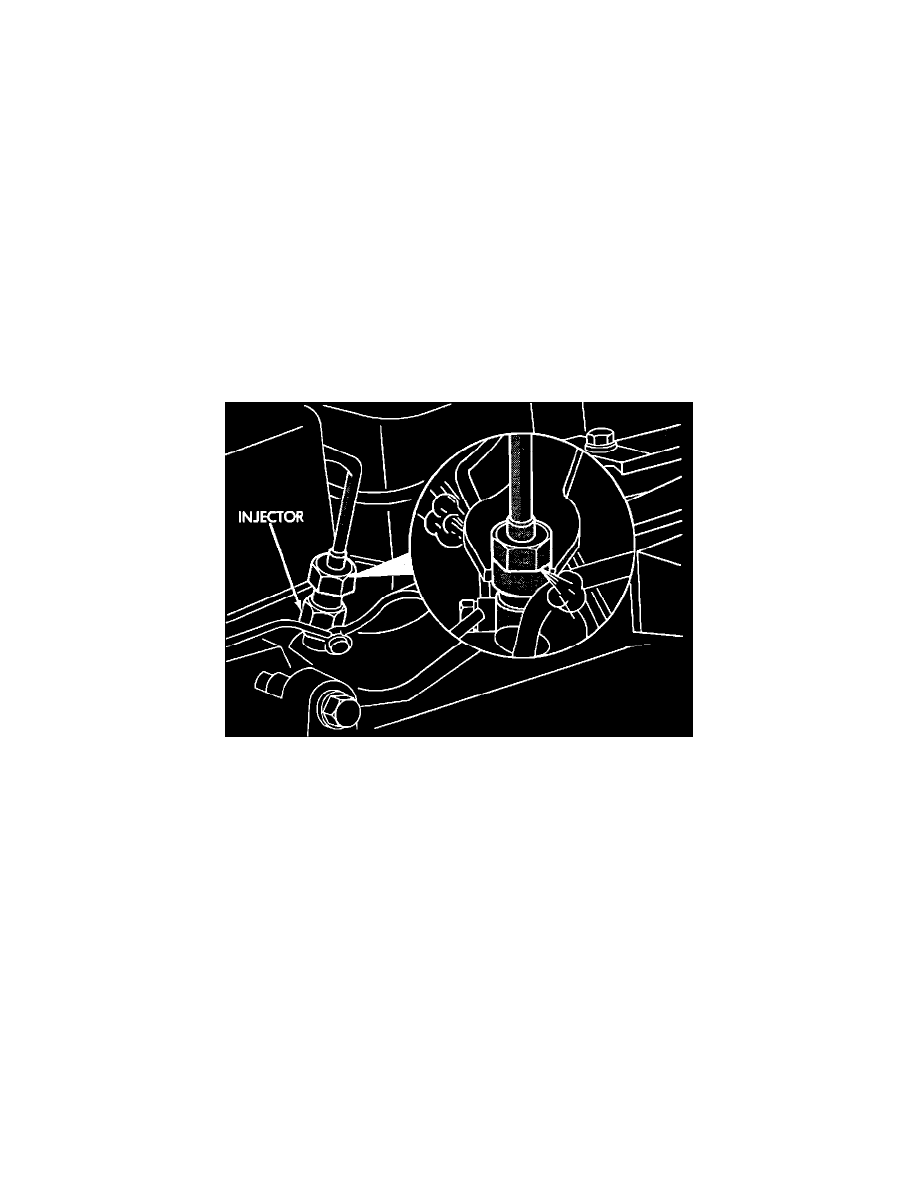W 250 Pickup L6-359 5.9L DSL (1989)

Fuel Injector: Testing and Inspection
Fuel Injector Test
NOTE: A malfunctioning injector can cause the following driveability symptoms:
^
Fuel knock
^
Poor performance
^
Black smoke from the exhaust
^
Poor fuel economy
^
Miss-fire under load or at idle
^
Low power
NOTE: Leaking high pressure fuel lines from the injection pump to the fuel injectors can cause many of the same symptoms as a malfunctioning fuel
injector. Visually inspect all of the high pressure fuel lines before checking for a malfunctioning fuel injector.
WARNING: The fuel injection pump creates line pressures in excess of 8,000 psi to each injector. Fuel under this pressure can penetrate the
skin and cause serious personal injury. Never place hands or fingers in the path of spraying fuel when bleeding fuel lines. Always wear eye
protection and wear protective clothing.
WARNING: Do not bleed the fuel system of a HOT engine. Do not allow spraying fuel to spray onto the exhaust manifold when bleeding the
fuel system, whether the engine is COLD or not.
Bleeding High Pressure Fuel Lines
1.
START the engine and allow to idle.
2.
Starting at cylinder #1, loosen the high pressure fuel line nut at the injector.
3.
Listen for a change in engine speed when the line nut is loosened. Tighten the line nut. If there was a noticeable change in engine speed when the
line nut was loose, then that injector is operating properly. If there was no change in engine speed when the line nut was loose, that injector is
malfunctioning.
4.
Test the remaining injectors in the same manner, one at a time.
5.
If an injector is found to be malfunctioning, remove and replace it.
